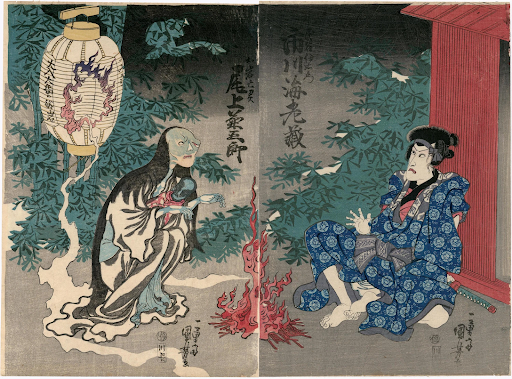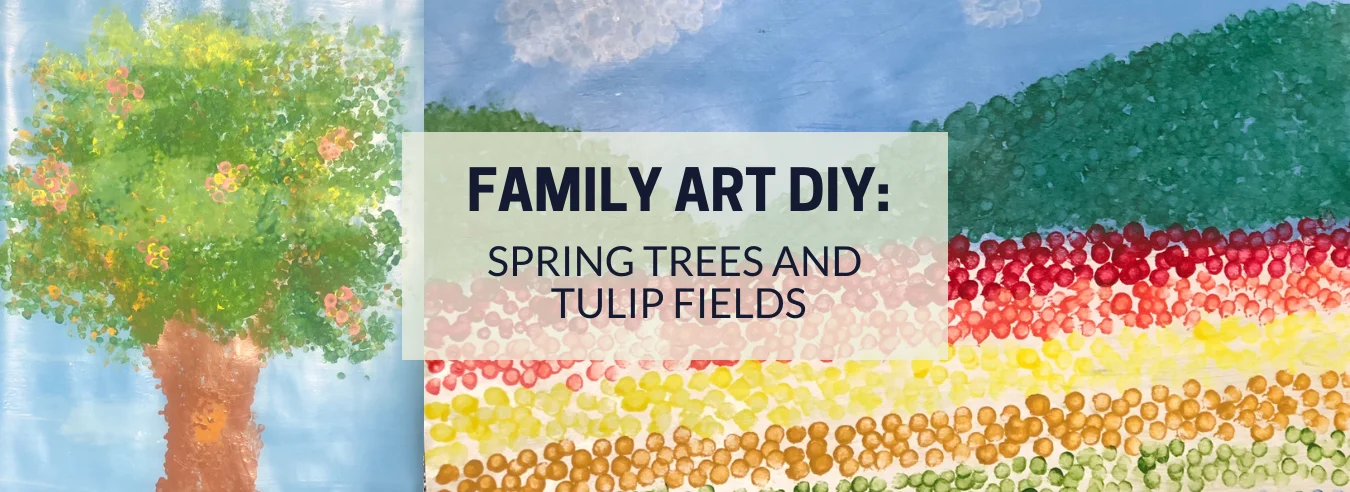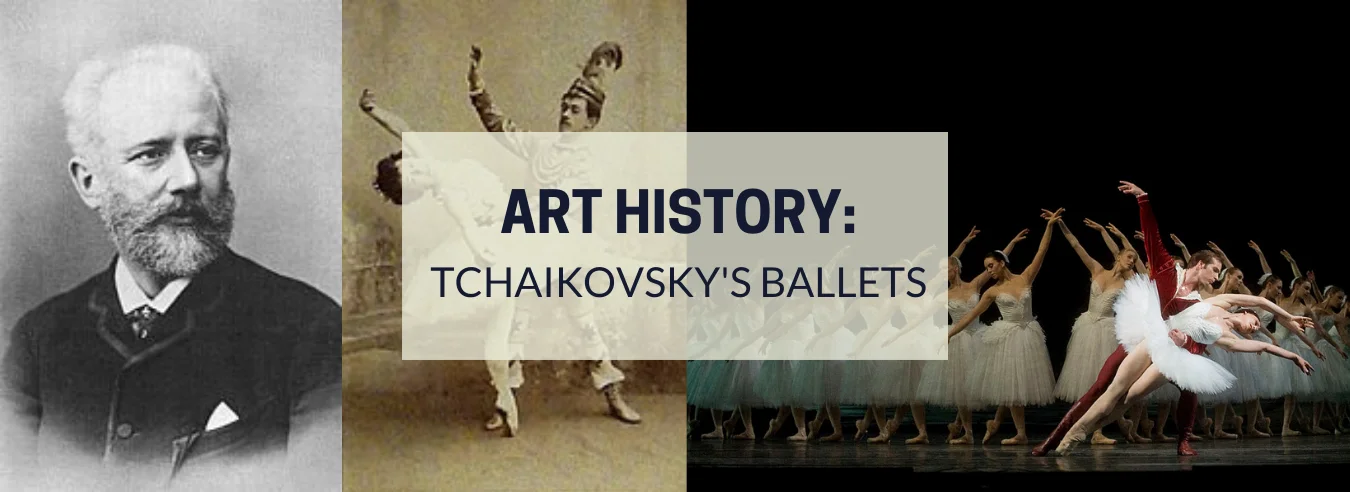With spring in the air, one usually thinks of the flowers and trees in bloom…
5 Spooky Paintings in time for Halloween
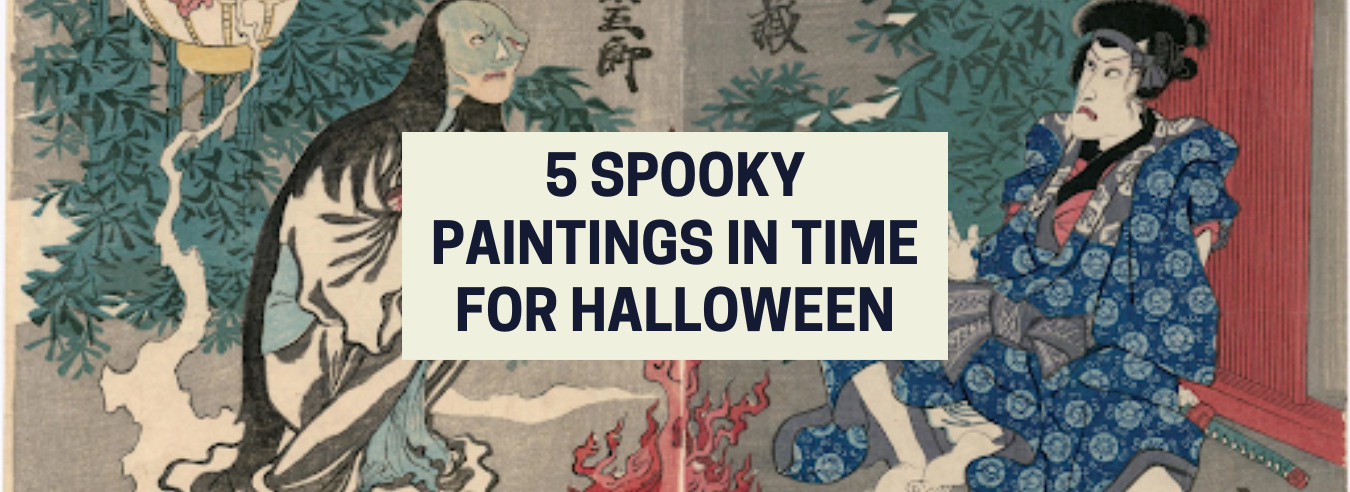
Although the weather is still warm in many places north of the equator, countless people are eager for fall holidays. Halloween is the one day of the year that spooky fans look forward to celebrating the most. There have been countless theories as to why people enjoy scary, unsettling entertainment such as horror movies and “haunted” houses. In the end, it may just be that we like the adrenaline rush of being scared while knowing that it’s all make-believe.
Throughout history, artists have also used horror themes in fine art to express their fears in a creative form. Take for example, Edvard Munch’s famous painting, The Scream. The expressionist work of art shows a person on a bridge with two silhouetted figures in the background. The landscape in this world appears distorted and the sunset is a swirl of red and orange. The person in the forefront is clutching their head and their expression is one of open-mouthed terror. This painting is highly provocative and people have analyzed its meaning for over a century. Does it represent anxiety and fear of the unknown? Or simply unadulterated madness? What’s great about art is that it’s up to the admirer to decide.
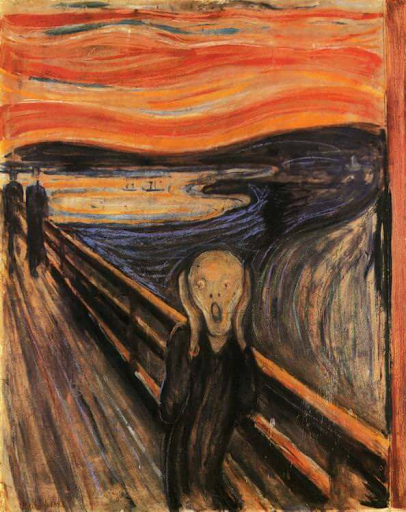
Below, you’ll find five additional spooky paintings to help you get into the spirit of Halloween. While you’re taking in and learning more about them, consider what fears or other thoughts come to mind when you look at each painting.
-
The Face of War – Salvador Dalí
Some of history’s greatest painters are celebrated for being the pioneers of a particular artistic movement. The Spanish-born artist, Salvador Dalí, is no exception and is perhaps the best-known artist of the surrealist movement. His powerful imagery plays on themes of the subconscious, sexuality, and the human condition. Dalí was also greatly influenced by the difficult times he lived in. By the time he painted The Face of War in 1940, he had lived through two of the greatest upheavals in Europe: the First World War and the Spanish Civil War. Dalí was deeply affected by the realities of war he witnessed, as is evident by the subject of this painting. The Face of War depicts a giant, disembodied head placed in a desolate landscape. Its expression is anguished, and, most striking of all, its eyes and mouth hide more skeletal faces within those same openings as far as the eye can see. Dalí‘s implication is clear: war leads to an endless cycle of misery and death. Nevertheless, it’s hard to look away from this compelling imagery.

-
Girl with the Death Mask (She Plays Alone) – Frida Kahlo
The Mexican-born painter, Frida Kahlo, is famous for her unique folk art style inspired by her Mexican roots. She was often the subject of her own paintings; in Girl with the Death Mask, Kahlo painted herself at age four. Donning a Day of the Dead holiday mask and holding a traditional Aztec marigold flower, Kahlo is surrounded by various symbols of her heritage. Although the somber, overcast sky and the spooky masks are unsettling, there is something quite melancholy about this painting at the same time. Kahlo contracted polio at a young age and her poor health ultimately isolated her from her peers. As she recalls in the title of the painting, Kahlo had few playmates, and as a result, her childhood was marked by loneliness. Girl with the Death Mask exemplifies how art that we may find spooky at first glance can often have deeper meanings that resonate with us once we take the time to look, discover and understand.
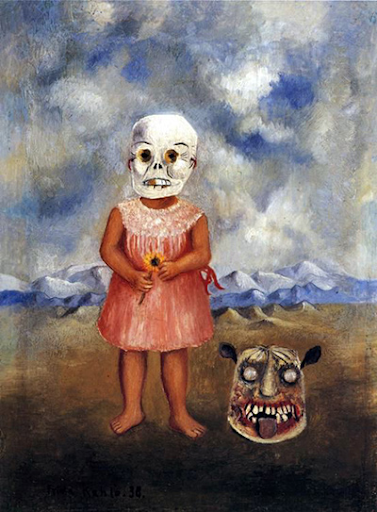
- Dante and Virgil – William-Adolphe Bouguereau
Dante Alighieri’s Divine Comedy is considered to be one of the greatest works of literature of all time and has been influential across various media forms. From stage plays to musical compositions and sculptures, Dante’s work proves that art inspires art. William-Adolphe Bouguereau took a scene out of the Divine Comedy and created a stunning and unsettling painting. In this scene, Dante and his guide, Virgil, venture into the eighth circle of hell where they come across two souls entangled in an eternal struggle. One of the fighters is biting into the neck of the other, his face contorted with such immense rage that it gives him a devilish appearance. The background is a hellscape of doomed men and women writhing in agony as a winged creature oversees the violence with visible glee.
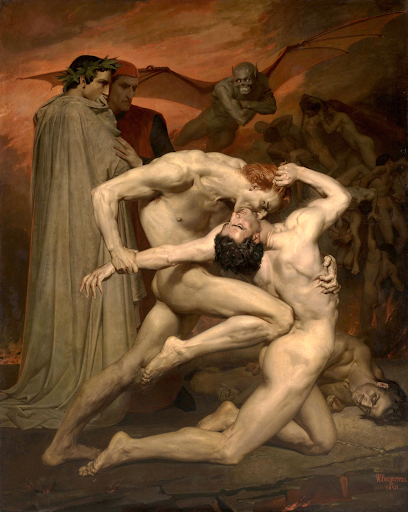
- Death and the Miser – Hieronymus Bosch
Fear of death is a fear as old as time. In the past, across many religions and creeds, death was personified by a skeleton dressed in robes. When a person’s life was nearing its end, Death would come calling to collect the person’s soul. Before that moment came, however, people believed they could right their wrongs and save their souls from the tortures of purgatory (such as the one seen in the previous painting). This theme was the center of Hieronymus Bosch’s 16th century painting, Death and the Miser. In it, a frail man lays on his deathbed surrounded by various symbolic figures. A demon to the left offers the old man a bag of money, while a supplicating angel attempts to direct the man’s gaze towards the light of a crucifix. All the while, Death creeps inside the sickroom with an arrow aimed at the dying man. It’s likely that Bosch chose this scene and the title of the painting as a warning against avarice. In the end, despite earthly possessions and amassed wealth, Death claims us all.
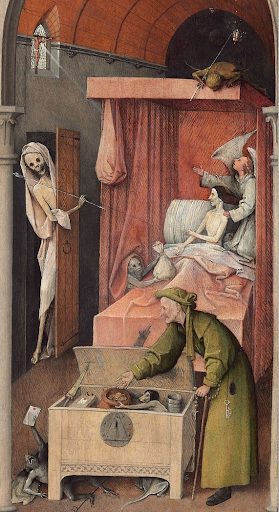
- The Ghost of Oiwa – Utagawa Kuniyoshi
No one truly knows what comes after death. This fact has led us to dream up and imagine an endless array of scenarios. In Japanese culture, for example, a person’s soul can remain after death if they are held back by a powerful emotion. The onryo are powerful spirits of vengeance that remain on earth after death to exact retribution on those responsible for their downfall or demise. The wrath of an onryo is also believed to cause natural disasters like earthquakes and typhoons. These vengeful spirits were the subject of countless ghost stories in traditional Kabuki theater, literature, and woodblock prints. Onryo became further popularized by modern horror films such as Ju-On (The Grudge) and Ringu (The Ring). In The Ghost of Oiwa, the ghost of a woman emerges from a lantern to attack the lover who spurned her and caused her death. The onryo is easily recognizable by her flowing black hair, disfigured face, and burial kimono. She leaves a lasting impression and it’s clear why this spooky folktale has remained popular despite being nearly 200 years old.
